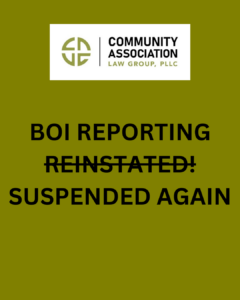Every year, I hear from directors and community managers about owners’ architectural modifications, with or without the Board’s knowledge. Architectural modification disputes are probably one of the most contentious issues Associations, especially HOAs encounter, and can turn ugly and litigious very quickly. The truth is, no one likes to be told what they can and cannot do to their home!
This is especially true if your Association does not have proper rules and procedures in place to regulate homeowner changes. HOAs and Condos alike should have ARCs or ACCs (architectural review/control committees) set up to ensure that any work done is consistent with the community, does not reduce neighbors’ home values, and does not jeopardize or impede any common areas/elements or limited common areas/elements of the Association.
Ideally, a community will have a clearly explained method and even forms for how an owner requests a change, detailing what they must provide and how to submit those forms. The ideal community will also have a clear standard by which the request will be determined, outlining any restrictions on the location, color, material, etc. for the request, while also explaining the aesthetic aims of the community. This same community would explain the process after approval such as if modifications are needed, any inspections, and a timeline for completion; and would explain any appeal process or how to modify plans after a plan rejection. A good set of documents would also include authority for what will occur if an owner does work without approval, or exceeds the approval granted, it would include a provision for attorney fees, the right to enter and remove/repair/restore the area, and to assess those costs back to the owner.
Ensuring that your community has procedures in place within its governing documents, typically in the Declaration and described in more detail in your Rules and Regulations, will help minimize homeowner disputes and reduce Association and Board member liability. The challenge with this is that your requirements should be specific enough to allow the association express authority and minimize the risk or allegation of inconsistent treatment of owners, while also being broad enough to ensure the Board can stop an owner from painting their home lime green with purple trim or ripping out a load-bearing wall in their condo. If that sounds difficult to draft, you would be right. This is something that should be discussed with your general counsel Attorney so they can help fine-tune the language in your governing documents, make sure the directors and community understand how the particular documents work, and help you avoid issues in the future.





